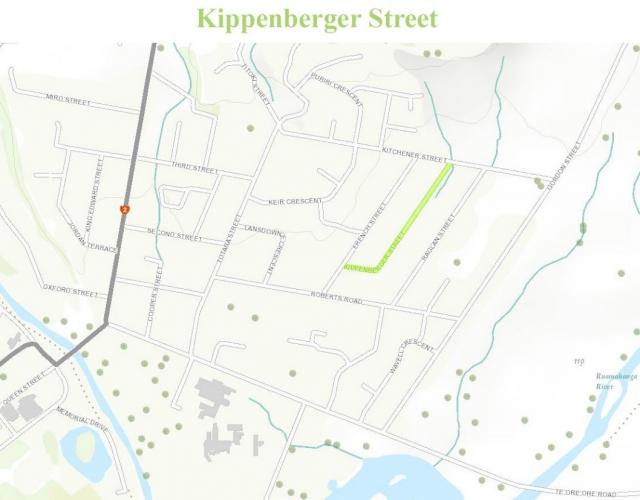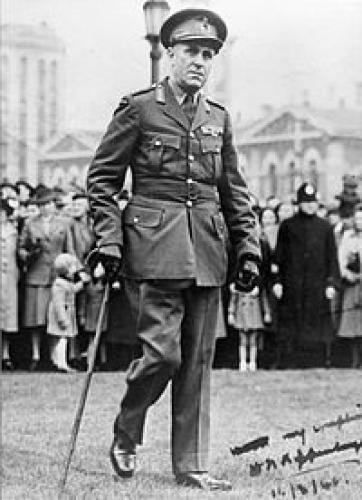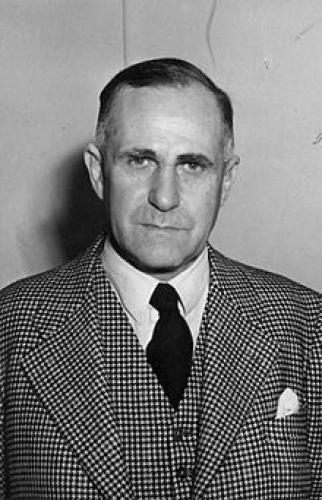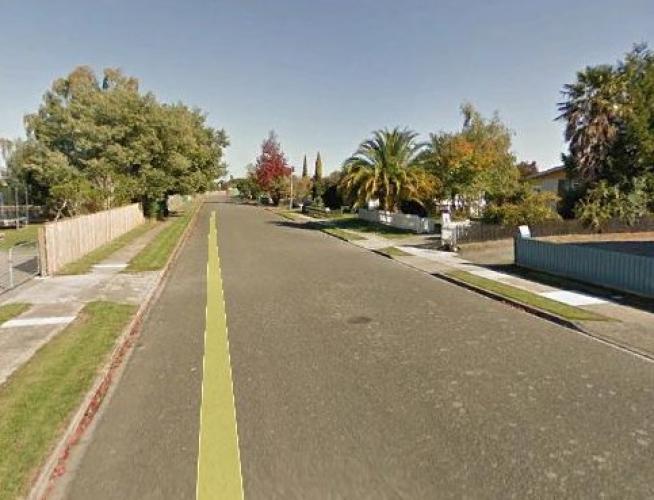100 Kippenberger Street Masterton, street scene 2017
Reason for the name
This street was named in honour of Major General Sir Howard Karl Kippenberger, KBE, CB, DSO & Bar, ED, known as "Kip", he was an officer of the New Zealand Military Forces who served in the First and Second World Wars.
Kippenberger Street is in the suburb of Lansdowne, Masterton. Most of the streets in this part of Masterton are named after leading British and New Zealand military figures.
These include Gordon Street (Gordon of Khartoum, died 1885); Roberts Road (Lord Roberts VC, c-in-c South African War, died 1914); French Street (Sir John French, cavalry leader in South African War, c-in-c BEF 1914-1915); Raglan Street (c-in-c British Army, Crimean War, died 1855); Kitchener Street (Lord Kitchener, victor at Omdurman, c-in-c after Roberts in South African War, War Minister 1914-1916, died 1916). These streets were named before World War One, reflecting pre-World War One fame.
Additional streets named after military figures were added after World War Two as this part of Masterton expanded. This latter group included Churchill Avenue, Wavell Crescent, Gort Place, Montgomery Crescent, Montgomery Place, Kippenberger Street and Allenby Street.
Kippenberger Street runs off French Street and links to Kitchener Street. The subdivision was created from land between French and Raglan streets. There are about 70 residential sections in the street. In planning, the area was referred to as the French-Raglan subdivision.
At a meeting of the Town Planning Committee of Masterton Borough Council on Tuesday 14 October 1975 it was moved by Councillor D.J. Carruthers that: As streets in this area have been named after Generals, the new street will be named Kipperberger Street.
The naming is interesting because it refers to a New Zealand military figure rather than British.
Author: Neil Frances Wairarapa Archive
Sir Howard Carl Kippenberger (1897-1957) was, after General Bernard Freyberg, New Zealand’s most prominent army leader in World War Two.
He was a young Canterbury soldier in World War One, volunteering in 1915. He was wounded in November 1916 during the Battle of the Somme and was judged unfit for further service, returning to New Zealand and discharged from NZEF in April 1917.
He trained as a solicitor and joined the Territorial Army in 1924. In 1939 he was appointed commanding officer of the 20th Infantry Battalion, 2nd NZEF. He led the battalion for two years, in the Greece and Crete campaigns. Kippenberger was promoted to brigadier, taking over the 5th Infantry Brigade, leading it through the North African Campaign when he was again wounded.
During the Italian Campaign he briefly led the NZ Division while Freyberg commanded a corps. In March 1944 near Cassino, he stood on a mine, losing both feet as a result. After recovery in England he was appointed commander of the NZ Reception group in 1944-45, responsible for handling released NZ prisoners of war.
On his return to New Zealand he was made Editor-in-Chief of the official histories of New Zealand in World War Two. He also wrote an autobiography Infantry Brigadier. He was dominion president of the RSA from the late 1940s.
Howard Kippenberger was knighted in 1948 and died suddenly in 1957.









